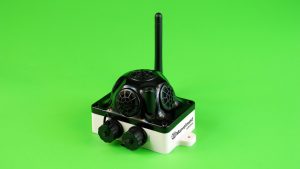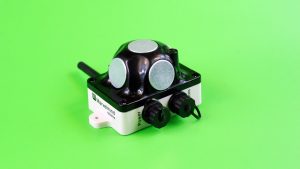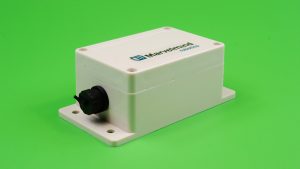Outdoor local positioning system
Can an indoor positioning system work outdoors? – Yes, of course!
There is no fundamental difference between indoor and outdoor local positioning systems. They use the same architectures and even very similar beacons. For example, Indoor positioning system for archaeology.
Both indoor and outdoor local positioning systems belong to Realtime Locating Systems or RTLS.
But there are essential details that have to be taken into account.
Ingress protection
The most significant difference between indoor and outdoor is in the environmental conditions. Indoor is typically an office and warehouse/factory-like environment – reasonable 10…40C, no rain, no moisture, no dust, i.e., no special protection is required for the equipment.
Outdoor can be significantly harsher:
- -40C… +50C or even wider
- Rain
- Fog
- Dust
- Wind
- Saltwater
- Snow
- Ice
- Sun
- Chemical exposure
- Explosives in the air
- Etc.
So, depending on the conditions, different protection methods shall be applied. They may affect performance (weight, size, power consumption, etc.) and almost always involve costs.
Be very vigilant about IPxx marks, for example, IP67. It is a significant mark where:
6 means:
- Dust-tight
- No ingress of dust; complete protection against contact (dust-tight). A vacuum must be applied. Test duration of up to 8 hours based on airflow
7 means:
- Immersion, up to 1 meter (3 ft 3 in) depth
- Ingress of water in harmful quantity shall not be possible when the enclosure is immersed in water under defined conditions of pressure and time (up to 1 meter (3 ft 3 in) of submersion)
- Test duration: 30 minutes. Tested with the lowest point of the enclosure 1,000 mm (39 in) below the surface of the water, or the highest point 150 mm (5.9 in) below the surface, whichever is deeper
Impressive, right? Well, there is a fine print. The test says that when such conditions are applied, the device must withstand them and not be killed. The IP67 guarantee that the system will work in those conditions.
There is even more fine print:
- Immersion to what? – distilled water. Saltwater or other liquids – not applicable
- Dust – what is dust? – it is fine powder talc. If you have some different types of dust or even metal dust – not applicable
Thus, when the IPxx mark is seen, it shall be interpreted and used with all underlying assumptions, and often those assumptions are not applicable in real life.
Therefore, environmental conditions are the most challenging part of the outdoor local positioning system.
Power supply
It is relatively easy to get a power supply for stationary beacons indoors: regular power grid + converters, unprotected batteries, PoE – many options. See more: Power supply options for beacons.
It is more difficult outdoors:
- Sources may be not be available
- Bringing power can be more expensive than beacons themselves, particularly for the explosive environment (oil/gas refineries)
Other adverse factors
Wind can affect ultrasound-based systems in two ways, at least:
- Wind produces noise that can reduce the signal-to-noise ratio and limit the distance or decrease the accuracy
- Since wind is moving air, the speed of air is not accounted for in the system, and the measured location can be distorted
Luckily, these factors are not severe unless the wind is strong.
Drops of rain produce noise similar to ultrasound pulses. Thus, it is crucial to protect ultrasound-receiving beacons from the noise produced by the drops. All kinds of special shields and umbrellas usually do the job well.
What is good outdoors?
Typically, an outdoor is an open space. Covering the same territory with a fraction of stationary beacons required indoors is possible.
It is possible to do sensor fusion with GNSS systems, for example, GPS or RTK GPS, for the best performance.


